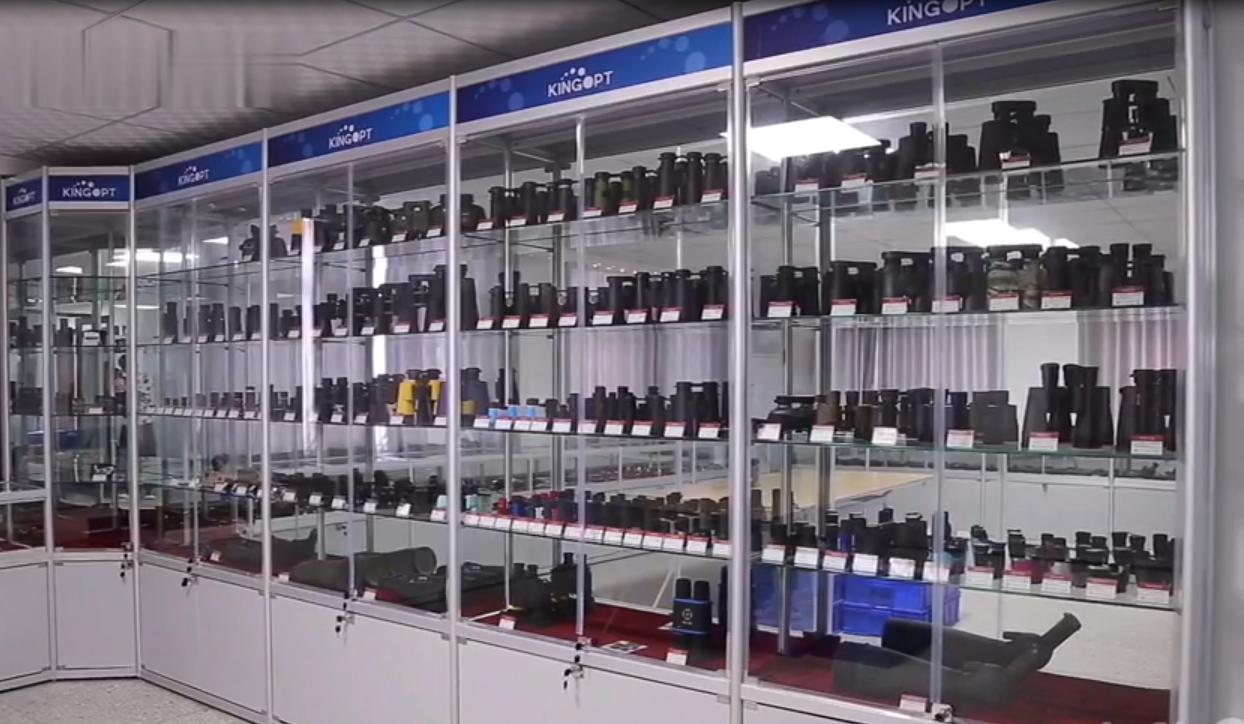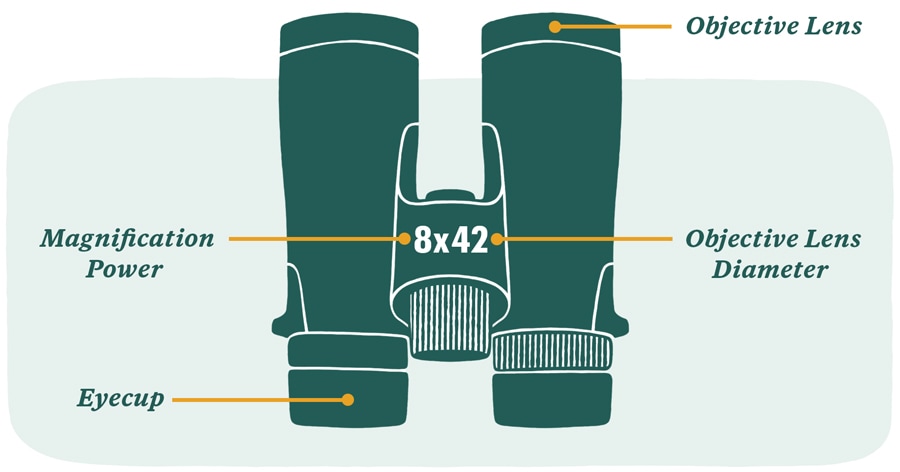Considering that binoculars are designed to bring clarity to your outdoor experiences, it’s amazing how confusing things get when trying to decide which pair of binoculars is right for you. The best way to evaluate the optical performance and ease of use for a pair of binoculars is to go to a store and look through several before you make a final choice. That said, here are a few key things we can help you understand when choosing the best binoculars for you.

A Quick Primer on How to Buy Binoculars
 What do the numbers (specs) on binoculars mean?
What do the numbers (specs) on binoculars mean?
Model numbers on binoculars essentially tell you their strength (magnification power) and size (objective lens diameter). In 8x42 binoculars, for example, “8” is the magnification power and “42” is the diameter (in millimeters) of the objective lenses (the lenses closest to the object you’re viewing). Objectivelens size gives you an understanding of how physically big the binoculars are and how much light they can gather. When you understand what these numbers mean and how they affect your viewing, you’ll know if you’re choosing binoculars that will be good for birding, stargazing or using on a moving boat, for example. (Below, we’ll go into more detail about binocular specs.)
Why are binoculars with similar specs pricier than others?
It's what's inside that counts, and advanced optics are a big reason why the price of similar binoculars can differ by hundreds of dollars.
What additional features are important to consider when buying binoculars?
Protective touches like rubber coating, as well as waterproof and fog-proof construction, factor into price, and depending on your intended usage may be well worth the upgrade.
How do I choose binoculars for specific uses?
If you want binoculars for a specific primary purpose such as bird watching, whale watching or astronomy, the basic guidelines below can help narrow down your choices. Magnification and size are the starting point, but optics and features should also factor into your decision.
![]()
Binoculars for backpacking and hiking: Because size and weight in a pack are key concerns, you’ll want compact binoculars with magnification of 8 or 10 and an objective lens diameter less than about 28 (8x25, 10x25, 8x28 and 10x28 are all fine choices). A pair with a rubber coating will be more durable, and models that are water resistant or waterproof will help with exposure to the elements.
![]()
Binoculars for birding: Assuming you’re less concerned about size and weight, you can look at midsize and full-size models (8x32 and 8x42 binoculars are popular with birders). While 10-power magnification might seem helpful in looking at a small animal, an otherwise identical pair of binoculars with a magnification of 8 will have a wider field of view, which is key to locating birds. Water resistance is also a good feature, as are models that won’t fog up when they go from a warm vehicle to cooler temps outside.
![]()
Binoculars for whale watching, wildlife viewing and safaris: Popular models include 8x32, 8x42, 10x32 and 10x42. Go with a higher magnification (10 rather than 8) when you’re likely to be far from the animals. Choose midsize (32mm objective lens) rather than full-size (42mm objective lens) if you want something a little more compact. Water resistance is also good—go with fully waterproof models, though, for whale watching from a boat rather than shore.
![]()
Binoculars for paddling: If you’re going to be out on the water on a canoe, kayak, SUP or whale-watching boat, you may want to stick with a lower magnification such as 8 or less, because a higher (10-power) magnification can make steady viewing challenging. Choosing a waterproof model is a good idea here, too, for obvious reasons. 8x32 is a popular size.
![]()
Binoculars for stargazing: Here’s where you want to maximize magnification as well as the light gathering ability of full-size binoculars. 10x42 or 10x50 are options to consider; if you go with higher magnification, you’ll need a tripod to hold the binoculars steady.
If you’ll be using your binoculars in a kayak, aboard a boat or on a trail in the rain, you’ll want to look at waterproof or weather-resistant binoculars. Be aware, too, that manufacturers sometimes describe any level of water resistance as “waterproof,” even though there is a distinction:
Waterproof binoculars typically use O-rings to seal out moisture. They can survive a quick splashdown, but not extended submersion. (And most binoculars do not float.) Binoculars with this level of protection typically include “waterproof” in the model name.
Weather-resistant (or water-resistant) binoculars are not fully waterproof. They can handle light rain, but not a deluge nor a dunking in a creek.
While it won’t provide full-scale crash protection, a rubber coating is still helpful to guard against minor bumps and bruises. It’s a worthwhile feature for any binoculars intended to be used in rugged outdoor environments.
Binoculars can fog up when you move from a cold to a warm environment. Not only is that annoying, it also can be potentially damaging if moisture gets trapped inside.
To counter fog, binocular makers purge the air inside and replace it with nitrogen, which has no moisture content and therefore won’t condense. This protects against fogging up of the internal lens surfaces, not the exterior ones.
Contact: Daniel
Phone: 13383770088
E-mail: daniel@kingopt.com
Whatsapp:
Add: No.4 Industrial Park, Nanyang ,Henan,China